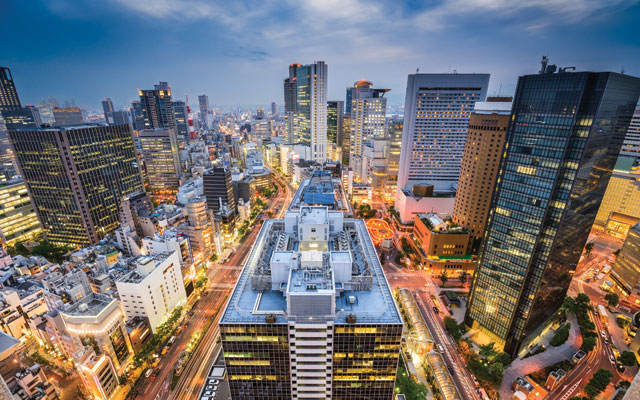Osaka, already on the map for big delegations, now wants to be top-of-mind for corporate elites with bleisure spending potential.
Osaka is busy expanding its appeal as a destination for incentive travellers, with an added focus on big-spending groups at the luxury end of the spectrum.
“Up until 2010, MICE in general for us was mainly international conferences and conventions associated with the universities in and around Osaka, many of which were major global events in the medical sector,” said Yasunori Fukuda, head of the MICE promotion division at the Osaka Convention and Tourism Bureau.
“That was the sector that we were chasing and we had a range of financial supports available for those events.
“That market is stable today, but there has been a rapid increase in incentive travel to Osaka since 2012, for a variety of reasons,” he told TTGmice.

Those factors include a sharp increase in incentive arrivals from other parts of Asia after the Japanese government relaxed visa requirements for a number of nations; more affordable flights thanks to the growth of low-cost carriers flying into Kansai International Airport; and more tax-free shopping to reel in those with cash burning holes in their pockets.
Seventy per cent of incentive travellers arriving in Osaka are from Asia, with Taiwan, China, South Korea and Hong Kong heading the list, followed by Thailand and Singapore. More recently, according to Fukuda, arrivals from Malaysia, Vietnam and Indonesia are challenging those market-leaders.
“In 2017, we had some very large corporate incentive groups coming to Osaka, such as insurance firms or networked businesses based in China or Taiwan, with as many as 5,000 visitors,” he said.
“That sector is stable, but we really want to build on the smaller but very high quality groups of around 200 people or so,” Fukuda said.
He added that the aim is to attract major corporations in the region looking to hold their board meetings in a new city that also has plenty for executives to do on the fringes of meetings.
“These are big-budget meetings, they want to stay in five-star hotels and have unique experiences as well,” said Fukuda. “In the past, we might have targeted large incentive groups, but our strategy is now shifting to smaller groups with larger budgets at the higher end of the market.”
Aoi Samata, head of international sales at the Hilton Osaka, said inbound incentive travel in 2017 flattened since peaking in 2015 – but expects a more positive performance in 2018.
“I think 2017 has been the calm before the storm of the major events that are coming to Osaka and Japan more generally in the next few years,” she said.
“Osaka and Kobe will host eight games in the 2019 Rugby World Cup, and we also expect a positive impact the following year, when Tokyo hosts the Olympic Games.”
The 527-room Osaka Hilton is already fielding requests from agencies putting together packages for the rugby tournament that will go on sale early in the New Year.
Meanwhile, Osaka, traditionally seen as “Japan’s kitchen,” is building on that reputation for its overseas incentive travellers with a number of new attractions, including courses on how to create the city’s unique cuisine, such as takoyaki (balls of batter with octopus meat fillings) and okonomiyaki (savoury pancakes).
The city is also emphasising its night culture, with its tourism bureau drawing up a list of the top 50 night clubs, bars and live performance venues that would appeal to foreign visitors.
The bureau and companies in the city are active in promoting Osaka at business-event-related travel shows around the world, with some pointing out that Japan’s second city is also able to take advantage of its proximity to Kyoto – just 30 minutes away by train. It also helps that Kyoto continues to suffer from a chronic shortage of hotel rooms throughout the year.
Yet Jim Watanabe, of the MICE section of Kinki Nippon Tourist Kansai, believes that more needs to be done to extricate Osaka from the shadow of Tokyo for incentive travellers.
He said: “In comparison to Tokyo, we are still not so well known. To win more MICE visitors, we need to be able to provide more high-quality events and facilities.
“We need to do something different to what is available elsewhere in Japan – more hands-on experiences and unique venues – and we need to communicate that,” he said, adding that continuous communications is key.
“But I believe there is a lot of variety in and around Osaka and that makes us a very attractive destination.”





















